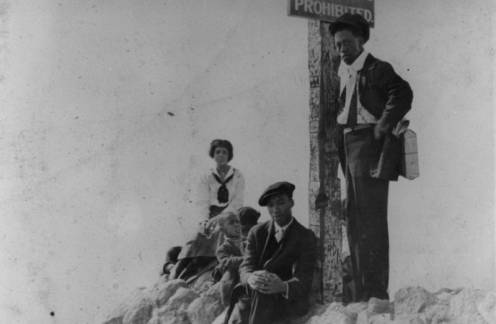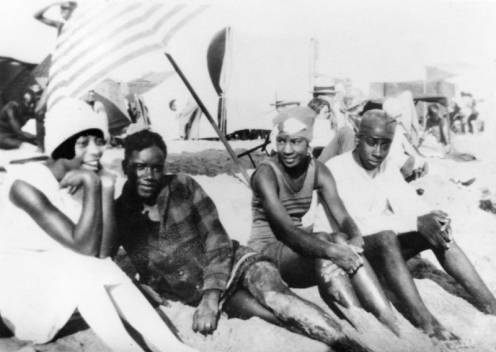The history of Jim Crow Laws and racism in California hindered whole generations of black people from enjoying the sport of surfing. CGTN’s Mary W. MacCarthy and Timothy Myers caught up with Ronda Harper, the founder of Black Girls Surf, who is working to teach more women of color to surf and compete.
“I came out here and the first thing I notice is, it’s so white. And – where are my people?” said Ronda Harper, the founder of Black Girls Surf. “You’re on display. Everyone else can come out here and just surf. Whereas when you see black women, or black people come on the beach and surf, it becomes a spectacle.”

Black Girls Surf athletes Olga Diaz and Shelby Turner paddle out to the the waves at “The Ink Well” in Los Angeles.
She said she’s often stopped by people surprised to see her with a surfboard.
“There are times I can’t even get to my car without people wanting to take pictures of me with my surfboard, because they never saw a black surfer. Sometimes it can be annoying. It’s upsetting, a bit, because we’re just people. It’s not something that’s new. We’ve been doing it forever,” Harper said.

A group at a breakwater near a sign where the word “Prohibited” is partially visible at a beach area in the environs of Santa Monica and Venice shoreline, possible near the historical African American, preferred beach gathering place from 1920s–1960s around Bay Street. (Source: Los Angeles Public Library)

(L to R) Grace Williams, Albert Williams, Mary Mingleton, Willie Williams (no relation) in the segregated section of Santa Monica beach known as the Ink Well in 1926. (Source: Los Angeles Public Library)
She got tired of being one of the few black women on the waves, so she started Black Girls Surf to teach other women of color to surf — and compete.
“I’ve been inspired to join them, to train, to continue my passion, with the hope and goals of competing one day. It’s my space of true calm and feeling really free. My therapy. My happiness. I don’t worry about anything,” said Olga Diaz, a Black Girls Surf athlete and a physician.
“I decided to try to compete on an amateur level. I want other women my age, and younger black girls, to know — you can do what you want to do. I never saw someone who looked like me in the line-up,” said Black Girls Surf athlete and hostel manager Shelby Turner.
The group was so successful, that Harper was able to quit her job as a union carpenter and teach full time.
Harper says surfing is still overshadowed by a painful past that hindered many black people from learning to surf.
Beaches in California were segregated by race in Jim Crow era in the late 1800s all the way to the 1930s.
Even into the 1960s, African-Americans faced harassment on California beaches.
Many black people preferred going to places like “The Ink Well” in Los Angeles, because they faced fewer racial attacks.
Harper says she surfs at The Ink Well as often as she can.
“This is what I thought would be the hub of people of color. But, nope, we’re just here. And — just — trying to make a difference,” Harper said. “And I think that’s why when I do my interviews, I do it here. Because… my roots are here. My passion is here. I didn’t know the history, I was just drawn here. And then when I found out the history, I was like oh yeah I belong here. Do something about it. So – I’m here now.”
 CGTN America
CGTN America

